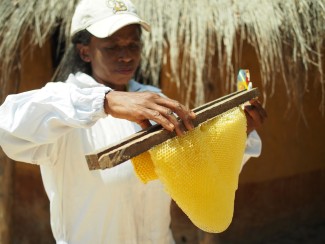Originally published in World Economic Forum Agenda.
The country seems to be following the right trajectory, having achieved an average GDP growth of 7.7% annually for the past two decades. While its GDP shrank during the Covid-19 pandemic owing to national and global economic contraction, Cambodia has bounced back sharply, with the International Monetary Fund projecting a growth of 6.1% in 2024, making it the 14th fastest-growing economy this year.
Among many things that Cambodia has achieved in the past two decades, the openness of its economy to international trade and investment stands out – particularly following its accession to the World Trade Organization (WTO) in October 2004.
When Cambodia acceded to the WTO, its merchandise exports were $3.39 billion and these have increased to $22.47 billion as of 2022. While this increase is impressive, because of the positive signals sent to foreign investors thanks to predictability of market access and policy stability following Cambodia's accession, foreign direct investment (FDI) also increased many times over.
Incoming FDI increased from $130 million in 2004 to $3.58 billion in 2022. What is even more formidable is that the FDI stock increased from $2.09 billion to $44.54 billion during the same period. Finally, another important measure of impressive FDI growth is that net incoming FDI as a percentage of GDP increased from 2.5% in 2004 to 11.9% in 2022.
Deliberate efforts by Cambodia’s government to achieve sustainable and equitable development, as outlined in successive development strategies, have contributed to these achievements. The country is projected to grow further by 2050 with critical expected outcomes and achievements by implementing a newly formed government strategy entitled ‘The Pentagonal Strategy – Phase I’.
Among many impactful actions taken in the past two decades the following are worth replicating by other LDCs, particularly those on the path to graduation:
1. Cambodia has been a front-runner amongst LDCs in effective use of Aid for Trade (AfT) – development assistance for trade capacity building. It was the first pilot country selected by the Integrated Framework for conducting a Diagnostic Trade Integration Study in 2001. It was also the first country to update its Diagnostic Study under the newly formed Enhanced Integrated Framework, an AfT programme dedicated to support LDCs, in 2007, which provided the basis for the Cambodian government to take advantage of resources from development partners and develop the first ever Trade Sector Wide Approach (SWAp).
This innovative approach represented a dedicated framework for channelling AfT resources to enable pro-poor growth (where the incomes of the poorest people grow faster than the overall population) through trade development. It helped mobilize about $16 million of resources into the trust fund for supporting various trade-related priorities.
2. Cambodia is often able to think outside the box and does not shy away from new approaches. Besides the Trade SWAp mentioned above, Cambodia started a programmatic approach to AfT initiatives, as exemplified by the Cambodia Export Diversification and Expansion Programme (CEDEP) in two phases with the support of the EIF and other partners. While CEDEP’s first iteration included projects to support the rice and silk sectors, its second phase included projects aimed at supporting cassava, marine fishery and a culinary academy.
While most of these projects have delivered impressive results, the rice project implemented in collaboration with the International Finance Corporation (IFC), which contributed to significant growth in Cambodia's milled rice production as well as exports, deserves a special mention. The project made a notable contribution to increase milled rice capacity from 100,000 metric tonnes (MT) to 530,000 MT between 2010 and 2015. The project facilitated more than $140 million worth of exports by 2015. The growth has continued: a figure from 2022 suggests that Cambodia's milled rice exports increased to 630,000 MT in volume and $414 million in value.
3. Cambodia has also been a pioneer in terms of mobilizing partners and taking advantage of resources beyond the support of the EIF programme. For example, while the European Union co-funded the rice project, the Swedish International Development Agency co-funded the culinary arts academy project. When Cambodia developed an e-commerce project, it was able to mobilize expertise and resources from development partners, such as the Australian Department of Foreign Affairs and Trade (DFAT), UNDP and from the Global Alliance for Trade Facilitation through Swisscontact.
4. The government of Cambodia has significantly improved the business climate, which has made it possible to increase private sector investment. It has a liberal foreign investment regime and actively courts FDI. In 2021, Cambodia adopted a new law on investment that contains investment incentives, investor guarantees and revision and improvement in investment procedure. The latter is aimed at attracting and promoting quality, efficient and effective investment tailored to support socio-economic development priorities.
5. Cambodia has signed free trade agreements with various trading blocs and partners, including ratifying the Regional Comprehensive Economic Partnership (RCEP) Agreement and bilateral free trade agreements with China and the Republic of Korea in 2022. The following year, Cambodia concluded the Comprehensive Economic Partnership Agreement (CEPA) with the United Arab Emirates and the country plans to enter into similar trading arrangements with major trading partners in the world.
In summary, Cambodia has managed to combine its openness to external investment, trade and business with effective use of AfT and strong country ownership, which has helped sustain economic reforms. A careful balance of these factors is imperative for any LDCs aspiring to achieve sustainable and irreversible graduation.
If you would like to reuse any material published here, please let us know by sending an email to EIF Communications: eifcommunications@wto.org.

